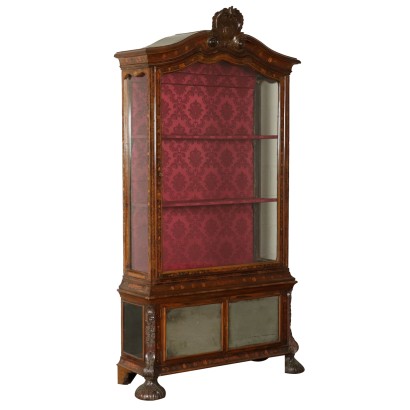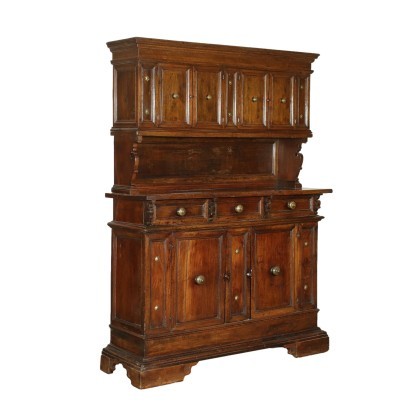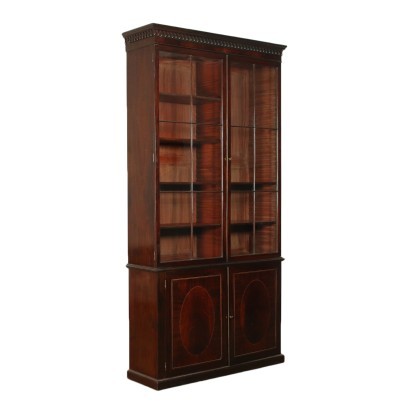Elegant Glass Cabinet with Inlays Holland Early 1800s
Features
Age: 19th Century / 1801 - 1900
Origin: Holland
Main essence: Maple , Walnut , Sessile Oak
Material: Walnut Burl
Description
Elegant glass cabinet with carved uprights, feet and pediment. A pair of doors with mirrors on the lower case. Large shaped glass door. Richly inlaid with flowers and tulips. Manufactured in Holland, early 19th century.
Product Condition:
Fair condition. Wear consistent with age and use.
Dimensions (cm):
Height: 218
Width: 120
Depth: 40
Additional Information
Age: 19th Century / 1801 - 1900
19th Century / 1801 - 1900Main essence:
Maple
Hard, light wood used for inlays. It grows mainly in Austria, but it is widespread throughout the northern hemisphere, from Japan to North America, passing through China and Europe. It is one of the lightest woods ever, tending to white, it is similar to lime or birch wood. The briar is used in the production of ancient secretaires .Walnut
Walnut wood comes from the plant whose botanical name is juglans regia , probably originally from the East but very common in Europe. Light or dark brown in color, it is a hard wood with a beautiful grain, widely used in antique furniture. It was the main essence in Italy throughout the Renaissance and later had a good diffusion in Europe, especially in England, until the advent of mahogany. It was used for solid wood furniture and sometimes carvings and inlays, its only big limitation is that it suffers a lot from woodworm. In France it was widely used more than anything else in the provinces. In the second half of the eighteenth century its use decreased significantly because mahogany and other exotic woods were preferred.Sessile Oak
Under the name of oak or oak various types of woods derived from plants of the genus quercus are grouped. They are always resistant, hard and compact woods. Oak is lighter than oak, both are used for more rustic furniture or for the interiors of French and English antique furniture. In other processes it was gradually replaced by the advent of exotic woods considered more valuable since the 18th century.Material: Walnut Burl
Alternative proposals






























